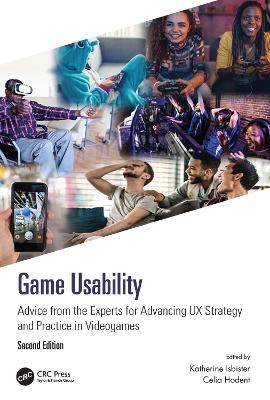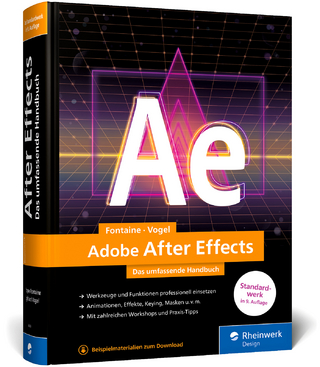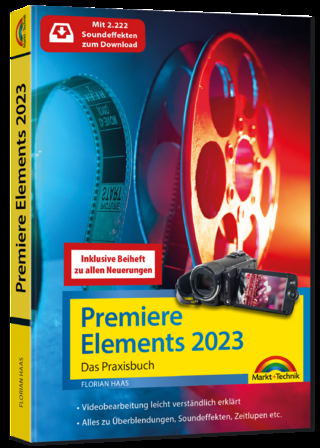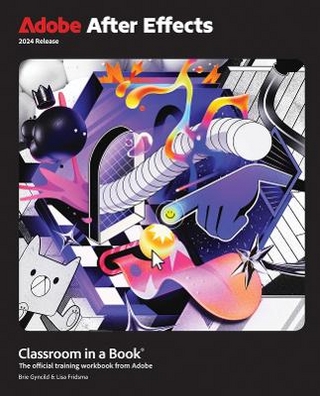
Game Usability
CRC Press (Verlag)
978-0-367-62424-8 (ISBN)
- Titel z.Zt. nicht lieferbar
- Versandkostenfrei innerhalb Deutschlands
- Auch auf Rechnung
- Verfügbarkeit in der Filiale vor Ort prüfen
- Artikel merken
This book introduces the basics in game usability and overall game UX mindset and techniques, as well as looking at current industry best practices and trends. Fully updated for its second edition, it includes practical advice on how to include usability in already tight development timelines, and how to advocate for UX and communicate results to higher-ups effectively.
The book begins with an introduction to UX strategy considerations for games, and to UX design, before moving on to cover core user research and usability techniques as well as how to fit UX practices into the business process. It provides considerations of player differences and offers strategies for inclusion as well as chapters that give platform and context specific advice. With a wealth of new interviews with industry leaders and contributions from the very best in game UX, the book also includes brand new chapters on:
Accessibility
Mobile Game Usability
Data Science
Virtual and Augmented Reality
Esports
This book will be vital reading for all professional game developers and game UX advocates, as well as those students aspiring to work in game development and game UX.
Katherine Isbister is Professor of Computational Media at UCSC’s Engineering School, where she directs the Social Emotional Technology Lab https://setlab.ucsc.edu/. Her research team creates interactive experiences at the intersection of HCI and Games/Play to heighten social and emotional connections and wellbeing, with over 100 peer-reviewed publications and games shown at IndieCade (Yamove! and SceneSampler) and other public venues. Her most recent book from MIT Press is How Games Move Us: Emotion by Design, winner of an American Library Association award. Isbister is a Founding Fellow of the Higher Education Video Games Alliance, a recipient of MIT Technology Review's Young Innovator Award, and is an ACM Distinguished Scientist. http://www.katherineinterface.com/ Celia Hodent holds a PhD in psychology and has over ten years of experience in the development of UX strategy and processes in video game studios. Through her work at Ubisoft, LucasArts, and as Director of UX at Epic Games (Fortnite), she has contributed to many projects across multiple platforms, from PC to consoles, mobile, and VR. Celia is also the founder of the Game UX Summit, and advisor for the GDC UX Summit. She is the author of The Gamer’s Brain: How Neuroscience and UX can Impact Video Game Design and of The Psychology of Video Games. She currently works as an independent game UX consultant. Twitter: @CeliaHodent Blog: celiahodent.com
1. Introduction: What’s New in This Edition, How to Read This Book. 2. Advancing Game UX Maturity. 3. Usability and Game Feel. 4. Games Research Evolution at Microsoft. 5. Try One Yourself: A Guide to Running a Practice User Study. 6. Heuristic UX Evaluation in Games. 7. Let the Game Tester Do the Talking: Think Aloud and Interviewing to Learn About the Game Experience. 8. How Bias Affects Games – And What You Can Do About It. 9. Working with Game Analysts and Data Scientists. 10. Physiological Measures for Game Evaluation. 11. Integrating UX Practices into the Production Pipeline. 12. Trust & Safety and Fair Play in Video Games: Intentionally Designing Positive Communities. 13. Accessibility Then and Now - History, Myths, Considerations and Tools. 14. Reframing Inclusion: The Case for Allyship. 15. Mobile Game Usability: Design and Research. 16. Designing for "Everyone": The Triumph of Casual Mechanics. 17. The Design of Virtual and Augmented Realities. 18. The Esports Experience: Fan, Player, and Beyond. 19.(Re)Discovering the Rich History of Game User Research: An 'Undisciplined' Approach. 20. How to Keep Up with What’s Happening and Last Comments.
| Erscheinungsdatum | 08.02.2022 |
|---|---|
| Zusatzinfo | 15 Line drawings, color; 16 Line drawings, black and white; 35 Halftones, color; 23 Halftones, black and white; 50 Illustrations, color; 39 Illustrations, black and white |
| Verlagsort | London |
| Sprache | englisch |
| Maße | 178 x 254 mm |
| Gewicht | 1280 g |
| Themenwelt | Informatik ► Grafik / Design ► Film- / Video-Bearbeitung |
| Informatik ► Software Entwicklung ► Spieleprogrammierung | |
| ISBN-10 | 0-367-62424-9 / 0367624249 |
| ISBN-13 | 978-0-367-62424-8 / 9780367624248 |
| Zustand | Neuware |
| Informationen gemäß Produktsicherheitsverordnung (GPSR) | |
| Haben Sie eine Frage zum Produkt? |
aus dem Bereich


